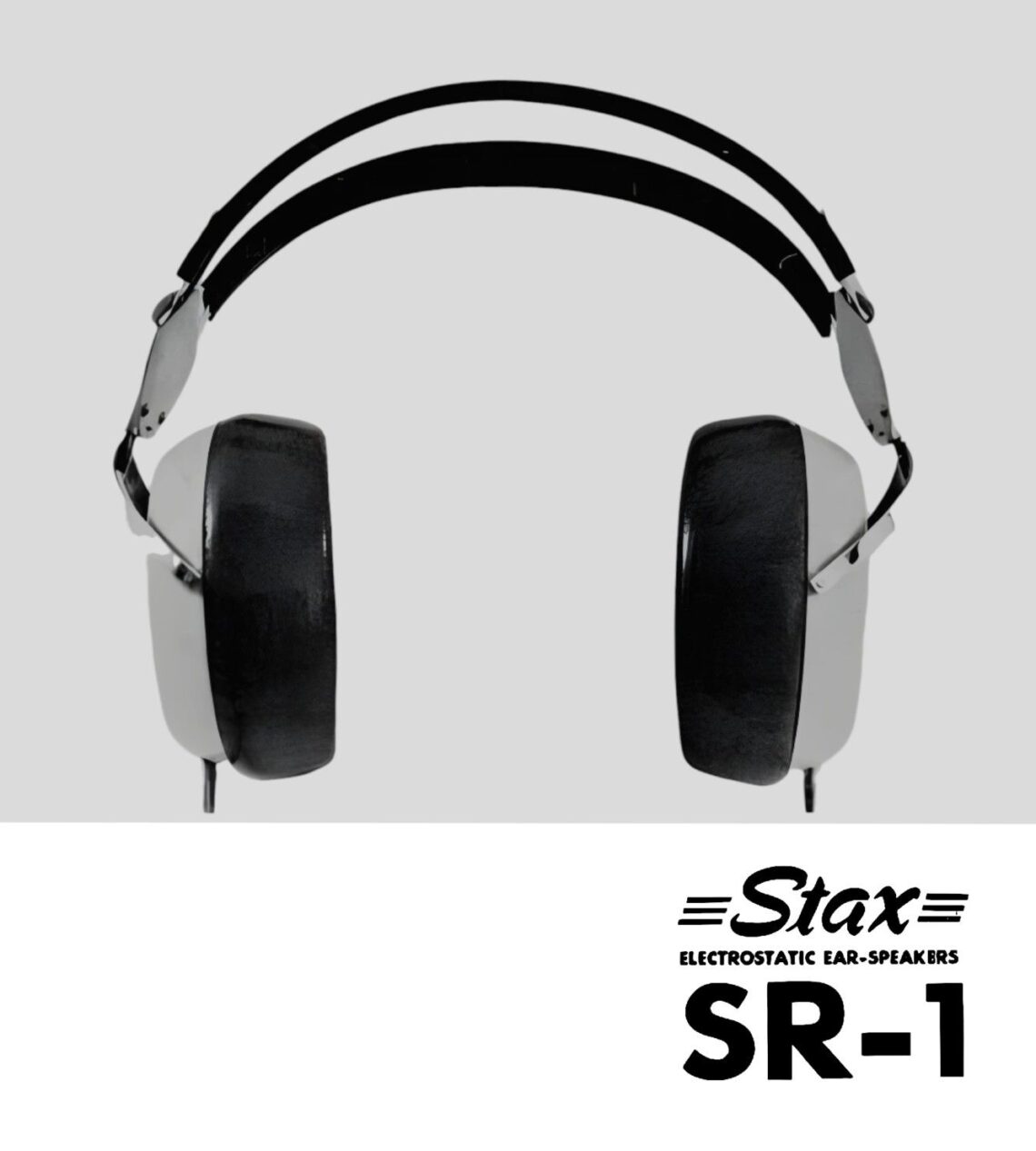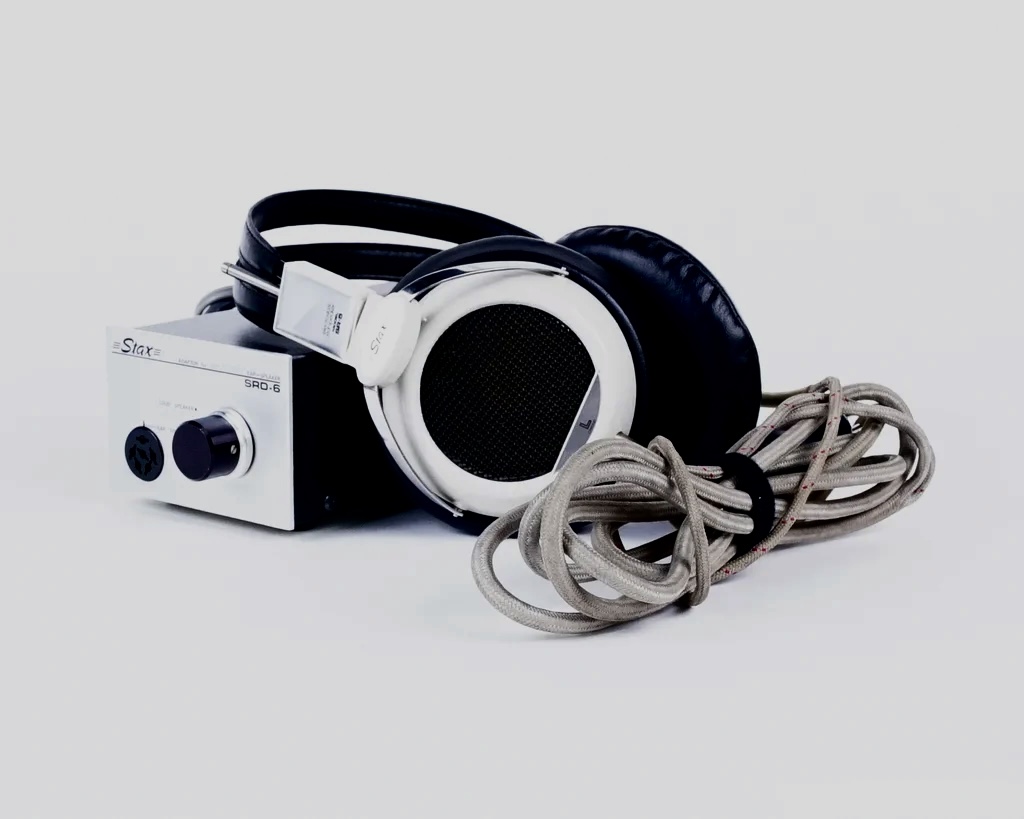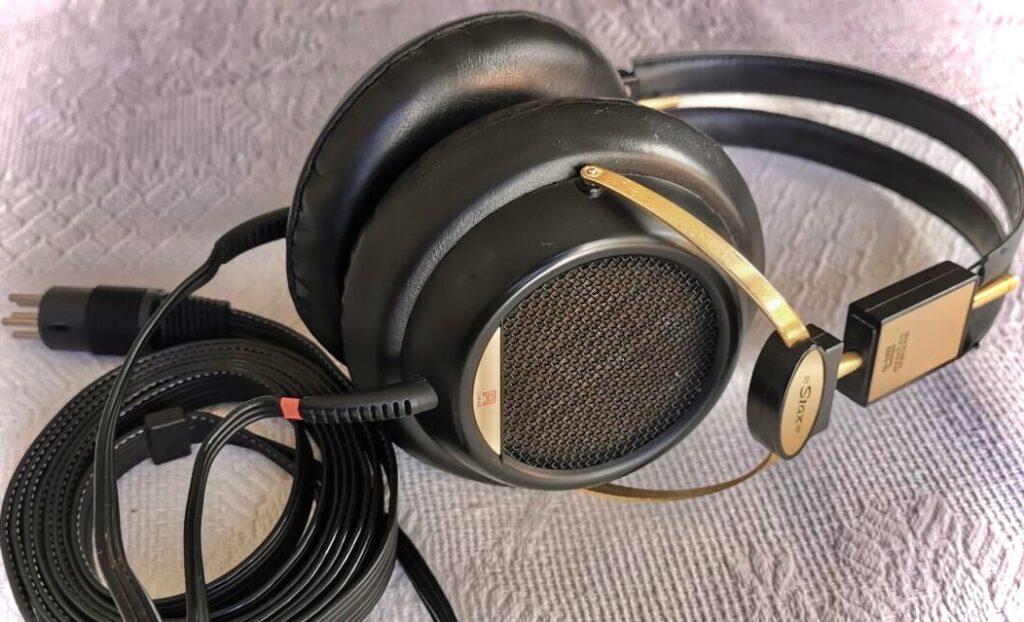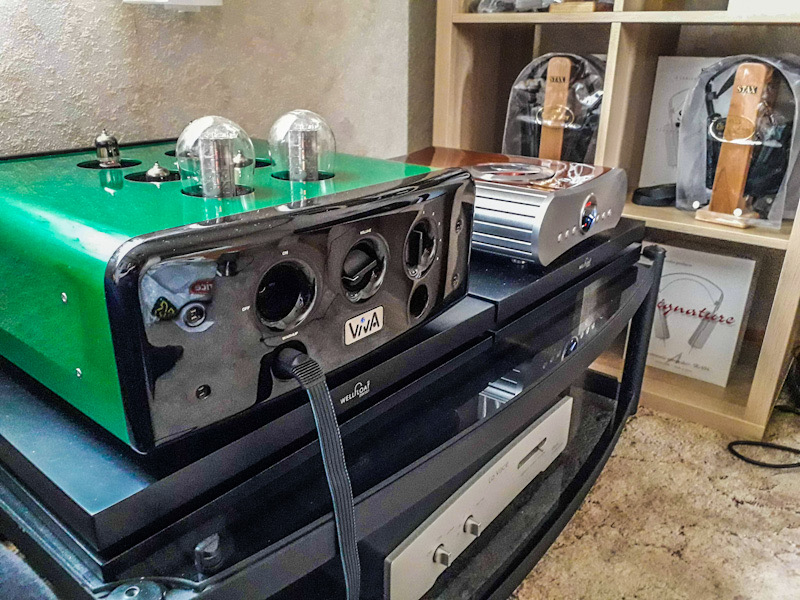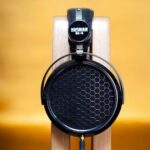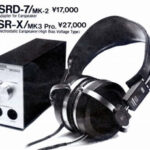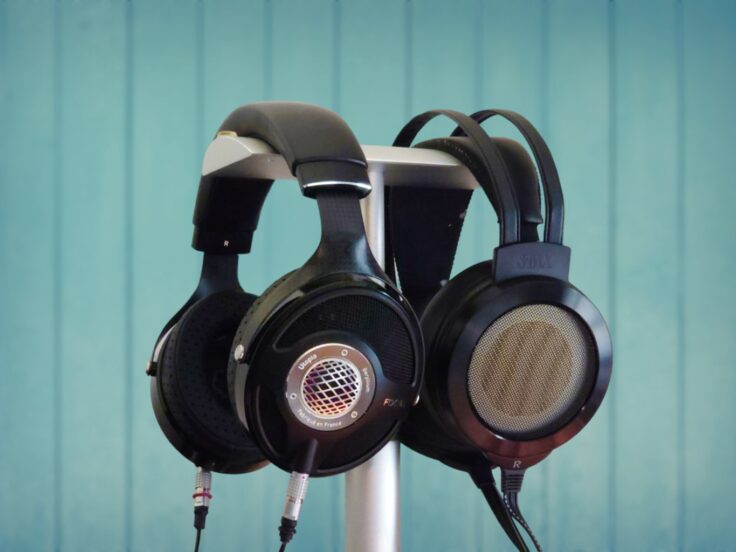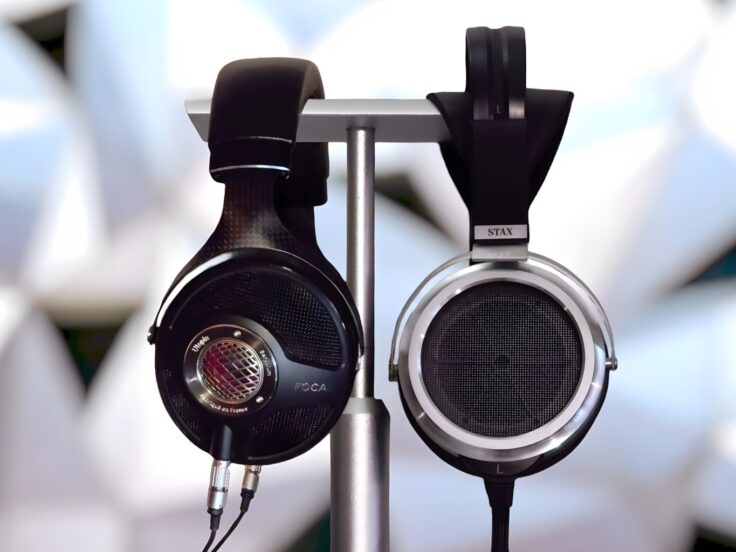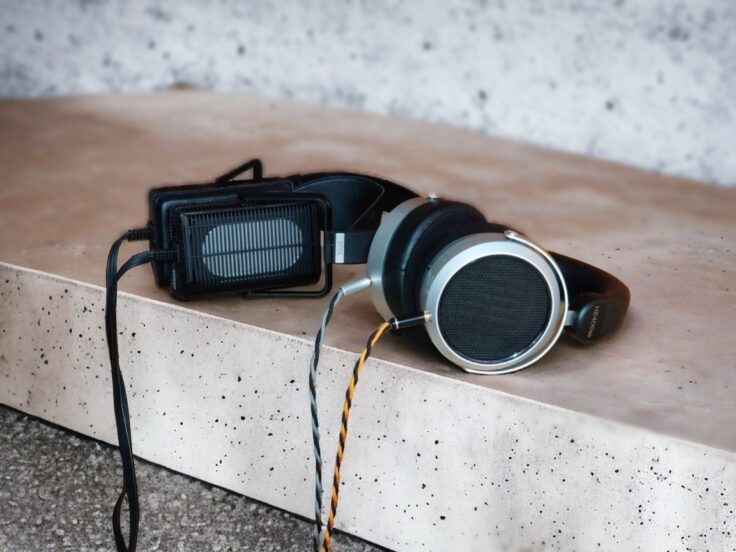By Svein Erik Bakken, introduction by Erlend B
Introduction: I have many friends in this hobby. Because it is a hobby. Being a hi-fi headphone enthusiast, a headfier, a headphoneer, is not only about listening to and enjoying music through headphones. It’s a mindset, always searching for new experiences and better or different sound. One of the biggest headfi nerds that I know is Svein Erik Bakken. He’s been into electrostatic headphones, and preferably Stax, since the early 80’s. His vast knowledge of Stax headphones is well-known through the small community of Norwegian headfiers. Below, he will guide us through the history of Stax.
Now here comes the first chapter of Svein Erik Bakken’s Stax history walkthrough. Enjoy!
– Erlend
The beginning
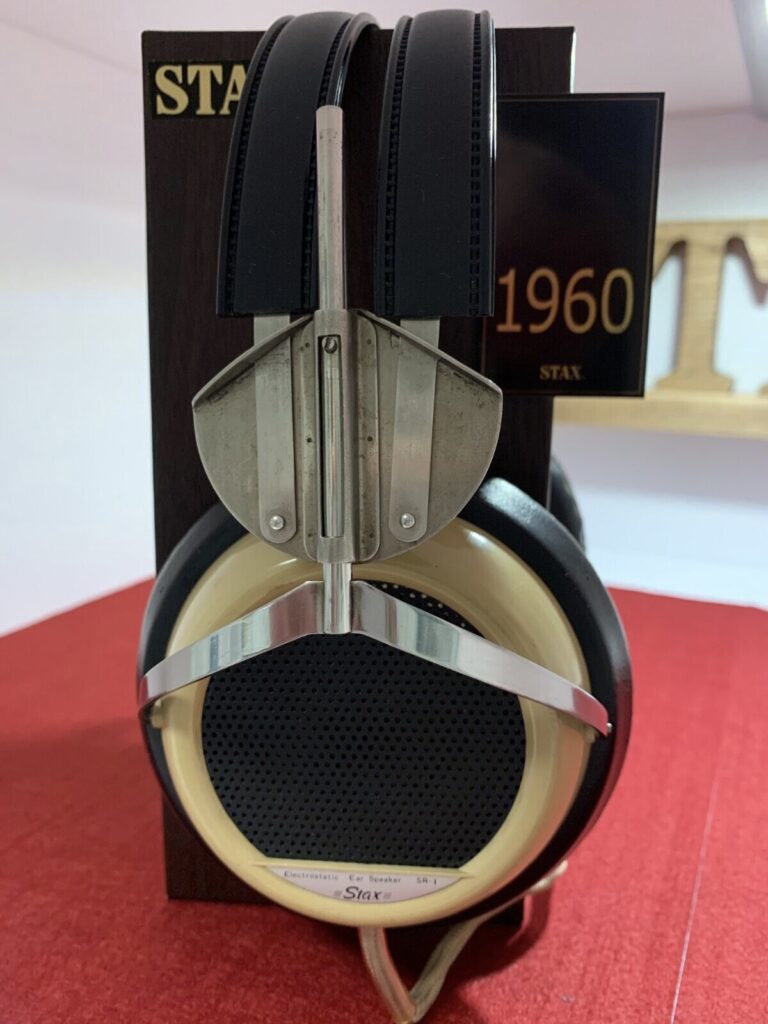
Stax SR-1
The Stax SR-1 was born in 1960 and became the start of an audiophile adventure. It was the first in what was to become the noble line of Stax earspeakers. The SR-1 was in production for eight straight years. As far as I know, Stax was the only company which was producing high-end electrostatic headphones in the 1960’s.
The SR-1 came in two versions. The first had a Normal bias of 150v, whilst the updated second edition had a bias of 200v. The second edition was available from 1964. The thickness of the diaphragm was 6 microns. The design catered to the high-end audiophile consumers of the time.
There are still people that own working sets of SR-1. They are listening to headphones that are 60 years old! The quality of Stax’ product was awesome! I have personally not heard the SR-1, but people who have heard them can report on very good treble and mids. However, it lacked proper bass. Nearly all electrostatics of the time was lacking in the bass . They feel closed-in and with a narrow sound-stage compared to today’s models. It is important to keep in mind that the first models were only made for a bias of 150v. They will not even work properly on a later 230v normal bias energizer.
Stax SR-2
There is a mystery around the SR-2. Some say that the name was just marketing with no real changes to the product. Anyhow, it was launched in 1968 with a normal bias at 200v. The sound was quite similar to the predecessor SR-1 and not very different from the successor SR-3. The SR-2 had a diaphragm thickness of 6 microns.
Stax SR-3
The SR-3 was launched in 1968. As sound goes the SR-3 supposedly has better staging and a little more oomph in the upper bass region than the SR-2. The bias voltage was 200v and the diaphragm thickness went down to 5 microns.
Stax “New SR-3”
This model came out in 1971 and was an improved version of the SR-3. It has been unofficially termed the ” New SR-3″. It had new drivers and softer earpads. The color of the assembly is a little more pale compared to the previous versions. The sound is supposed to have more upper bass, while the deep bass is lacking compared to the first SR-3. I have also been told that they have a more airy treble and a larger stage with improved imaging.
Stax SR-5
The SR-5 was a further development based on the SR-3 and came out in 1975. Both the headband and yokes were new. The logo was also new and the L/R stickers have silver background. The diaphragm thickness is the same as SR-3 (5 microns). They use the same ¨Normal¨ bias of 200v as the previous models.
It’s worth mentioning that SR-1, SR-2, SR-3, SR-3 New, SR-5 and SR-5 Gold all have the same cable. The cable was a braided cotton cable, similar to the one still used for steam irons.
Stax SR-5 Gold
This model saw the light of day in 1979. I have noticed some are writing that it was first released in the early 80’s but that’s wrong. The one that came out later was a little different as I will elaborate on later. As the name suggests, the headphone has a gold branding. This was one of the last Stax models with 200v bias and the sound is supposed to be the same as SR-5.
Stax SR-5 Gold BK
The last model with the 200v bias was released in 1980. It has black finish (therefore the “BK”) with golden yokes, some metal parts and stickers. Everything else is the same as the Stax SR-5 Gold.
Stax SR-5N
This model came out in 1982 and had some significant changes. It was the first with the newer Stax ¨Normal¨ bias of 220v. The cable was flat and similar to cables of Stax made today. The thickness of the diaphragm is less than half of the SR-5, only 2 microns thick. It is supposed to have a bettered spatial separation and pretty deep bass, but it lacks slam and weight to the lowest tones. They used the same drivers in the SR-Gamma/Alpha of the time.
Stax SR-5NB
This version was released in 1985 as a black edition of the SR-5N with golden details. This model was produced until the mid 90’s. The cable was a bit different and they had softer earpads. The sound is the same as the SR-5N.
An example of a no compromise, full blown electrostatic headphones amplifier: The Viva Egoista STX. It is not a Stax product, but it does bring out the best of Stax’ headphones
Summary
This series (SR-1 to SR-5) is very important to Stax history because they actually kept it going from 1960 until 1995. That’s an impressive 35 years. There where changes along the way, Stax is always developing their products with smaller updates. Just to give an example of what a niche market this is, there were only made 25.000 of all the SR-5 series headphones in 20 years.
Follow me through the fascinating history of this amazing company in part 2.
By Svein Erik Bakken
Here’s the complete series:
- STAX History Part 1
- STAX History Part 2
- STAX History Part 3
- STAX History Part 4
- STAX History Part 5
- STAX History Part 6
Any purchase you make on Amazon or Linsoul with any of our affiliate links will give us a small provision at no cost to you.
We only get a provision for items that are not returned, so there’s no incentive for us to recommend something that’s not good.
Linsoul : Headphones, Earbuds, Wireless Earbuds, Desktop DAC/AMP, Portable DAC/AMP, Digital Audio Players,
Amazon: Headphones, IEMs, Headphone Amplifiers, Home Audio or Anything else.
.
If you enjoyed this article or other content on The Headphoneer, you might consider leaving a small donation to keep this website up and running. No donation is too small. Thanks for supporting us!
If you like our work please follow us on Instagram, Facebook and Twitter , it will help us grow. Sharing is caring 🙂


